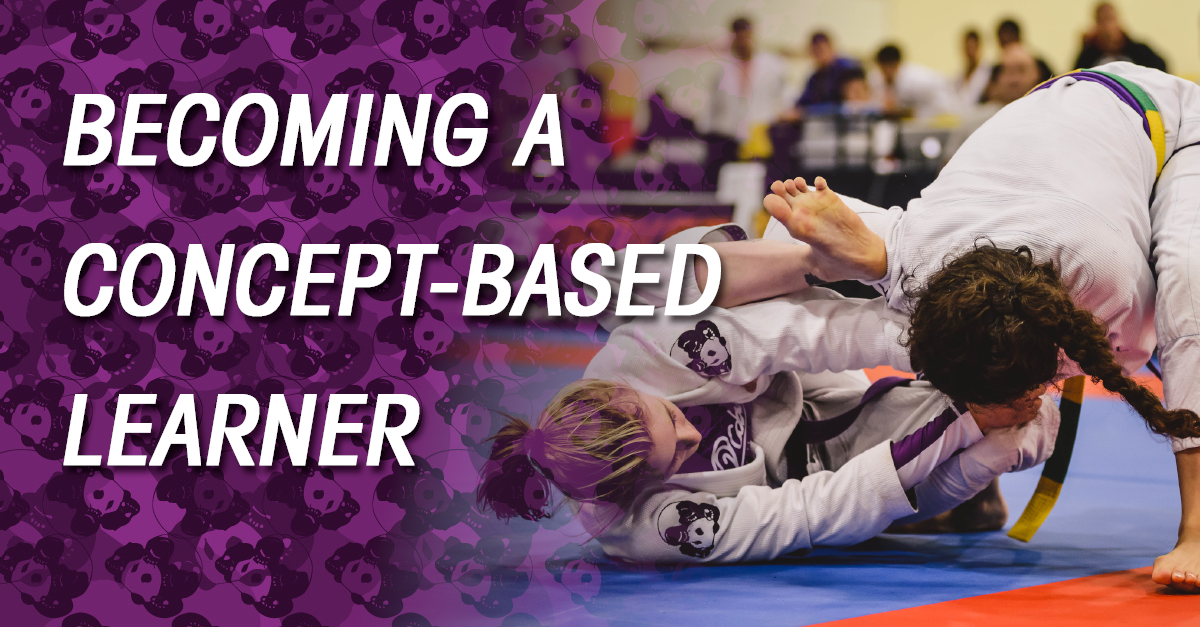
Concept-Based Learning in BJJ
This upcoming Saturday, I am running an End of Year Workshop for my students to help them start the new year ready to learn and improve as much as possible. We will be going over techniques, but we are also going to be setting goals, developing gameplans, and how to become a conceptual learner. In today’s blog post, I want to talk about concept-based approach as it has been on my mind a lot lately as I’ve been preparing for the workshop.
The trend toward concepts over techniques is not new, and if anything it’s bigger than ever. Our very own Panda Nation author Marshal Carper has written two very good blog posts about conceptual learning that you should check out: Are Jiu-Jitsu Concepts Actually Helping You Learn? and Distilling Technique Down to Concepts.
What I’m writing here will add to that discussion, and give you a preview of what I will be going over with my students in our End of Year Workshop.
Learning Concepts
Concepts are core ideas that explain something and how it works. BJJ is based on certain key concepts.
A good technique is based off one or more of these concepts. The fundamental techniques of BJJ are often the clearest and simplest expression of key concepts.
Once you understand a concept, you can apply it to many other techniques, positions, or situations. Conceptual understanding allows you to improvise in new or unusual situations and learn new techniques faster.
To understand the concepts behind a technique, reduce it down to its most basic steps and movements, and compare it to similar techniques to see how they are alike or different.
Core Concepts of BJJ:
Physics and biomechanics: Principles like leverage, balance, momentum, strong or weak structures, weight and pressure, good vs bad alignment, etc., and how these apply to human bodies.
Example: “When you cross-face someone, you limit which way they can shrimp or bridge, making their movements easy to predict. Likewise, if I can protect my face and turn in any direction, I am much freer to move however I want.”
Strategy and tactics: Positional hierarchy and dominance, misdirection and trickery, maximum results for minimum effort, using techniques in combinations, funneling and traps, trigger positions, counters and re-counters, etc.
Example: “Funneling is the idea of trapping your opponent in situations where they keep losing options and all outcomes are good for you. For example, if I cross my opponent’s arm in my guard, I am threatening to take their back, armbar them, and sweep them, and how they respond will give me one or another.”
For the workshop, I have created workbooks that contain the text above, as well as journaling prompts for each student to think and write about the concepts they have already experienced.
As an instructor, you may also have concepts that guide how you teach and what drills/games you run. If that interests you, check out How to Teach for Maximum Knowledge Retention.
Concepts are nothing magic, but they can be very useful in making sense of the seemingly endless variety of techniques in BJJ. My hope is this article has helped you shift into the concept-based mindset and start re-evaluating what you know in a new light.
Other articles:
Quick links
Contact us
About us
Quality BJJ gear at fair prices, available all year. Founded in 2012 to provide an alternative to high-cost, limited edition gis. Dive into the BJJ lifestyle with us—join the Panda Nation!"
